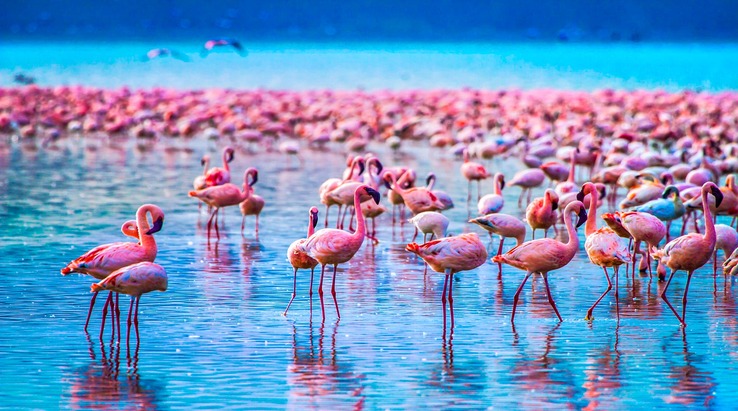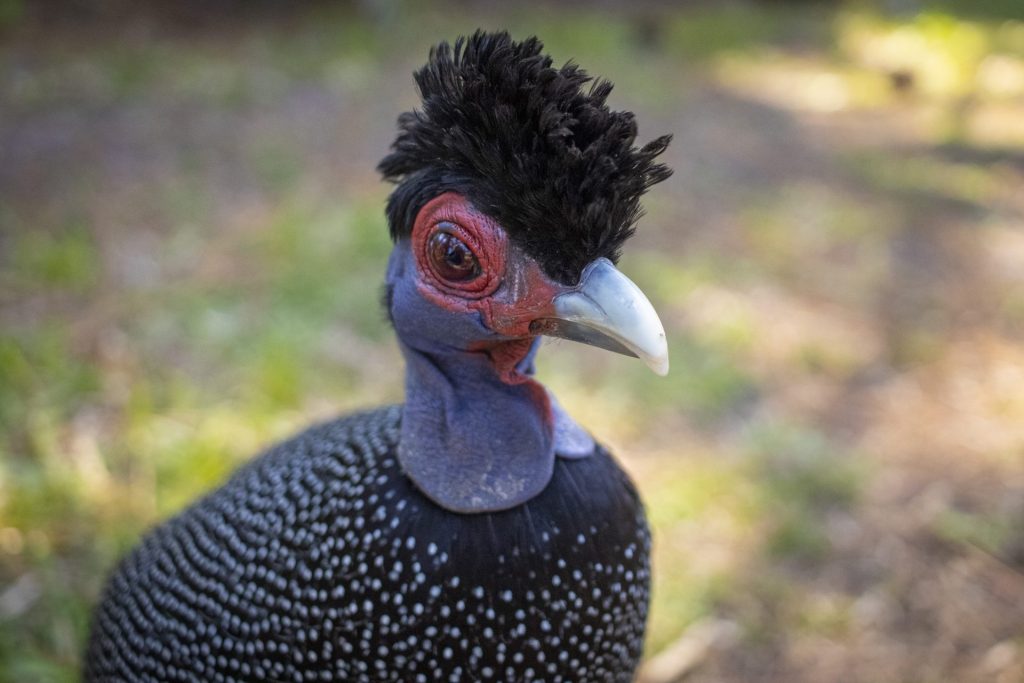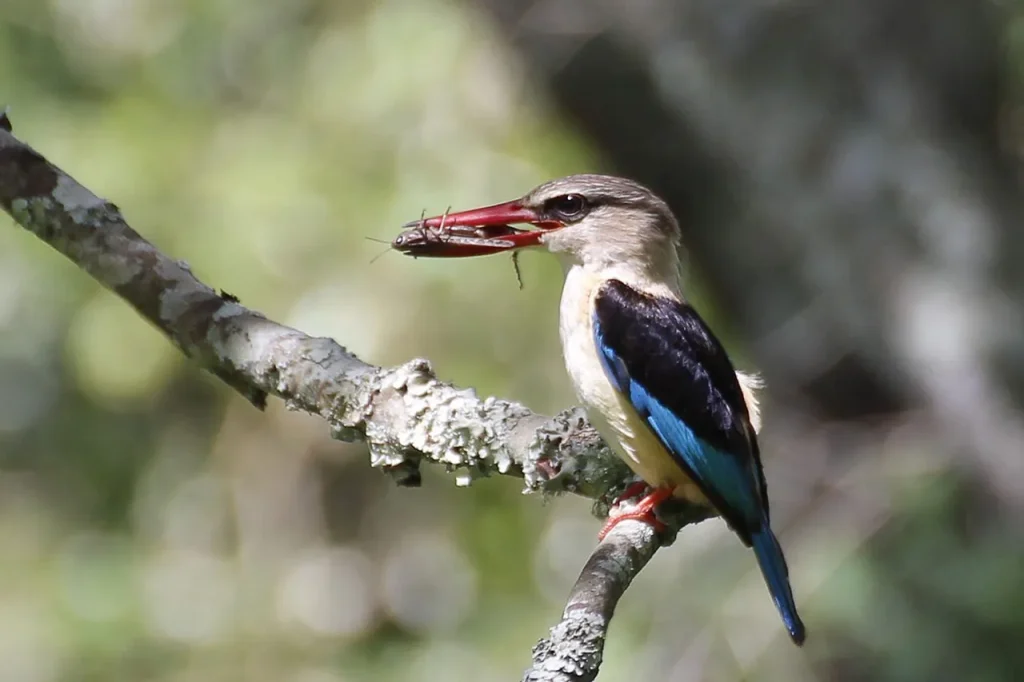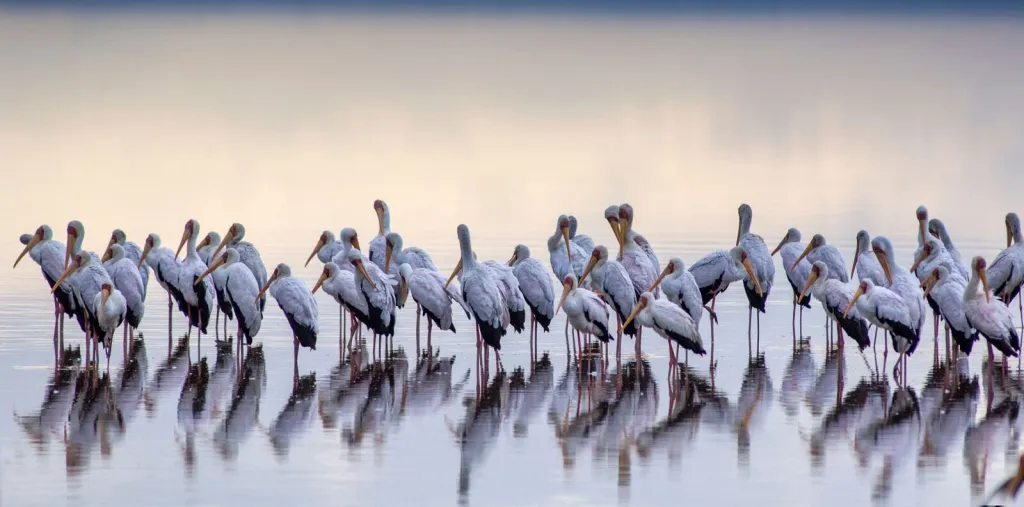Lake Manyara National Park: The heaven for Bird-Watchers




Introduction
Nestled at the base of the Great Rift Valley, Lake Manyara National Park is a paradise for bird enthusiasts. Known for its breathtaking scenery and incredible wildlife, the park offers an especially rich experience for those passionate about bird watching on Lake Manyara. With over 400 bird species recorded in the park, including migratory birds and rare species, this area is a vital habitat and an essential stopover for many types of birds. Here’s a closer look at why Lake Manyara National Park is a haven for bird-watchers and what visitors can expect on their journey.
The Spectacular Birdlife of Lake Manyara
Lake Manyara is an alkaline lake, which provides an ideal habitat for various bird species due to its abundant food sources and unique ecosystem. Bird-watchers in Lake Manyara National Park are often rewarded with sightings of diverse species, including:
- Flamingos: Known for their pink plumage, flamingos are an iconic sight in Lake Manyara. These birds feed on the algae in the alkaline waters, often forming large, colorful flocks that create a mesmerizing scene across the lake. Both greater and lesser flamingos are commonly seen, especially during migration seasons.
- Pelicans: Large flocks of white pelicans are often seen gliding over the lake’s surface or gathered in groups. With their impressive wingspans and elegant formations, pelicans are a favorite among photographers and bird enthusiasts.
- Yellow-billed Storks: With their striking yellow beaks and contrasting plumage, yellow-billed storks are a frequent sight along the lake’s shores. They are often seen hunting in shallow waters, providing visitors with a close-up view of their feeding behavior.
- African Fish Eagles: Known for their piercing calls, African fish eagles are one of the most recognizable birds in East Africa. Visitors may witness these powerful eagles swooping down to catch fish from the lake, showcasing their impressive hunting skills.
- Cormorants and Herons: Both species are well-represented at Lake Manyara. Cormorants are often seen drying their wings on tree branches near the water, while herons wade in the shallows, waiting patiently for fish or amphibians.
Unique Bird-Watching Spots in Lake Manyara National Park
For those seeking the best bird-watching locations within Lake Manyara, several spots stand out for their vibrant bird activity and scenic views:
- The Lakeshore: The shores of Lake Manyara are the prime bird-watching area, especially for large waterbirds like flamingos, pelicans, and storks. Early mornings and late afternoons offer the best light and activity levels for spotting birds on the lake.
- Groundwater Forests: The lush, green groundwater forests near the entrance of the park are home to numerous bird species, including hornbills, bee-eaters, and turacos. The forested area provides shade and food, attracting a variety of bird species and offering visitors a different bird-watching experience from the lakeshore.
- Acacia Woodlands: The acacia woodlands provide habitat for a different set of birds, such as lilac-breasted rollers, shrikes, and kingfishers. The vibrant colors of these birds add beauty to the woodlands, and bird-watchers will appreciate the diversity found in this area.
- Hot Springs Area: Near the southern part of the park, the hot springs are surrounded by marshlands that attract both resident and migratory birds. This unique area offers a chance to spot waterbirds like egrets, ibises, and other wetland species.
- Grasslands and Savannah Areas: The open plains of Lake Manyara are ideal for spotting ground-dwelling birds, such as ostriches and secretary birds. The plains are a great contrast to the lakeshore and forests, providing an opportunity to see bird species adapted to open habitats.
The Best Time for Bird Watching on Lake Manyara
Bird-watching in Lake Manyara National Park is rewarding throughout the year, but the experience varies depending on the season:
- November to April (Wet Season): This period is especially favorable for bird-watchers, as migratory birds from Europe and Asia arrive, increasing the park’s bird diversity. The wet season is also the breeding period for many resident birds, so visitors may spot birds in full breeding plumage and witness unique courtship displays.
- May to October (Dry Season): While fewer migratory birds are present, the dry season is still an excellent time for bird-watching, with abundant sightings of waterbirds along the lake. The dry season also attracts large numbers of wildlife to the remaining water sources, making it easier to spot birds alongside other animals.
Bird-Watching Activities and Tours in Lake Manyara
Lake Manyara National Park offers a variety of activities tailored to enhance the bird-watching experience:
- Guided Bird-Watching Tours: Professional guides with expertise in bird identification and behavior lead tours focused on bird-watching. These tours often include early morning or late afternoon sessions, the best times for spotting and photographing birds. Guides help visitors find and identify both common and rare species, enriching the experience.
- Self-Drive Safari with Bird Checklist: For experienced bird-watchers, a self-drive safari with a bird checklist can be a fulfilling experience. Visitors can explore the park’s ecosystems at their own pace, noting the birds they encounter. Many lodges and visitor centers provide bird checklists to help visitors track sightings.
- Photography Safaris: Lake Manyara is a dream destination for bird photographers. Specialized photography safaris, with longer stops at prime bird-watching locations, offer ample opportunities to capture stunning images of birds in flight, feeding, or resting.
- Walking Safaris: Certain areas around Lake Manyara offer walking safaris, which allow for a more intimate bird-watching experience. These walks, led by experienced guides, bring visitors closer to the birds without the interference of a vehicle, providing unique photo and observation opportunities.
Other Wildlife Highlights Alongside Bird Watching on Lake Manyara
Lake Manyara National Park is renowned not only for its birdlife but also for its other wildlife species that add to the bird-watching experience. Bird-watchers often have the chance to see:
- Tree-Climbing Lions: Lake Manyara is famous for its unique population of tree-climbing lions. While exploring the park for birds, visitors may spot these lions resting on the branches of acacia trees, creating an unforgettable wildlife encounter.
- Elephants: Lake Manyara’s lush groundwater forest provides a natural habitat for elephants. These majestic animals are commonly seen near the lake, often in the same areas as many bird species.
- Baboons: Large troops of baboons are frequently encountered near the park’s entrance and around the forests, adding another layer of activity and interest for visitors.
- Giraffes and Hippos: Giraffes are often spotted browsing in the woodlands, while hippos gather in shallow waters along the lakeshore, offering more chances for wildlife sightings alongside bird-watching.
Conservation Efforts and Bird Preservation at Lake Manyara
As a critical habitat for many bird species, Lake Manyara is a conservation priority. Efforts to preserve its delicate ecosystem include:
- Habitat Protection: Maintaining the health of Lake Manyara’s wetland, forest, and savannah habitats is essential for the park’s diverse bird population. Conservation efforts focus on protecting these habitats from environmental degradation and encroachment.
- Community Involvement: Local communities around Lake Manyara are encouraged to engage in conservation activities and eco-friendly practices, reducing their reliance on park resources and minimizing human-wildlife conflicts. Community-based tourism initiatives also raise awareness and generate income for the local economy.
- Ecotourism: Lake Manyara National Park’s focus on ecotourism and sustainable practices ensures that the park’s natural beauty and wildlife, including its rich birdlife, can be preserved for future generations. Lodges and tour operators are committed to low-impact tourism, helping maintain the park’s ecological balance.
Tips for an Unforgettable Bird-Watching Experience at Lake Manyara
To make the most of your bird-watching adventure, here are a few practical tips:
- Bring the Right Equipment: A good pair of binoculars, a bird identification guide, and a quality camera are essential. Bird-watchers may also want to bring a notebook or checklist to record sightings.
- Choose Optimal Viewing Times: Early morning and late afternoon are ideal for bird-watching, as birds are most active during these cooler hours. These times also offer the best lighting conditions for photography.
- Patience and Silence: Birds are often wary of loud noises, so maintaining a quiet and calm demeanor helps improve the chances of spotting rare species. Being patient and observing closely can lead to rewarding sightings.
- Work with a Knowledgeable Guide: Local guides are invaluable for bird-watching in Lake Manyara, as they know the best spots for sightings and can help identify unfamiliar species. Their expertise enriches the overall experience.
- Support Conservation Efforts: Consider contributing to conservation efforts by supporting local ecotourism businesses, purchasing locally-made crafts, and respecting park guidelines.
Conclusion: Lake Manyara – A Bird-Watcher’s Dream Destination
Bird watching on Lake Manyara is a truly special experience, offering a chance to observe some of Africa’s most iconic bird species in a stunning natural environment. From the vibrant pink flocks of flamingos to the powerful African fish eagles, Lake Manyara is a sanctuary for bird diversity and a place where nature lovers can witness the beauty of avian life up close. For any bird enthusiast or traveler seeking a deep connection with nature, Lake Manyara National Park is an essential stop in Tanzania, providing memories and encounters that will last a lifetime.

One Comment